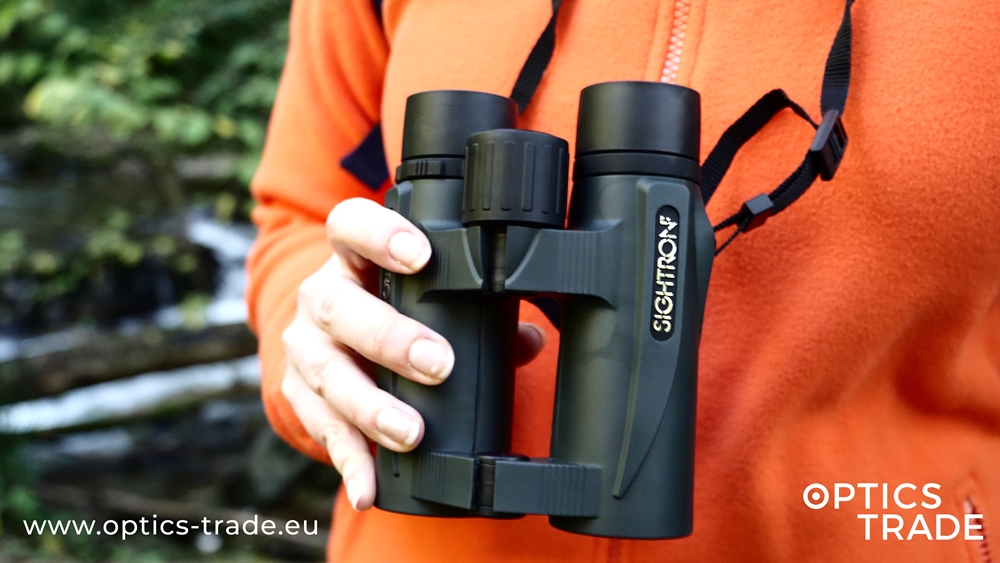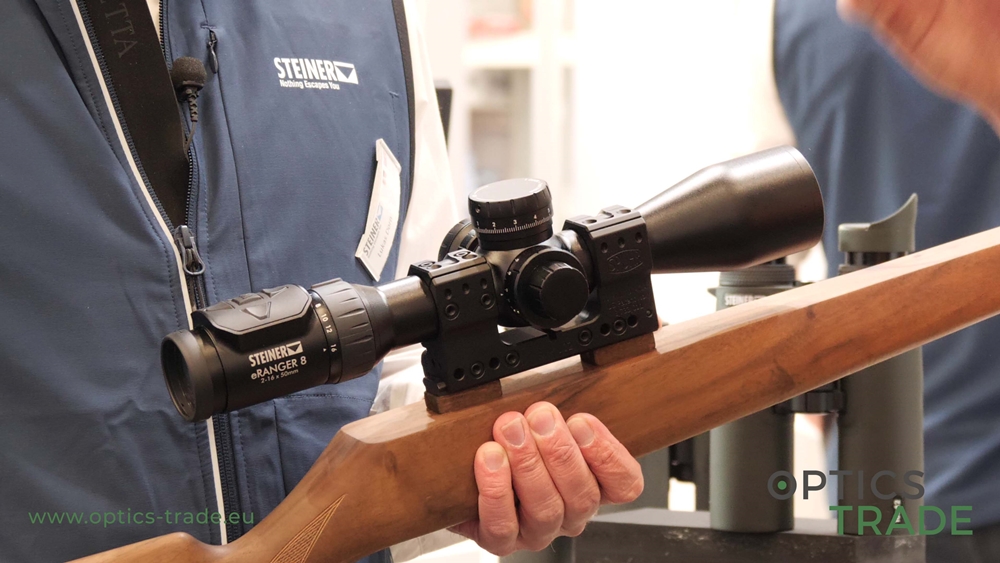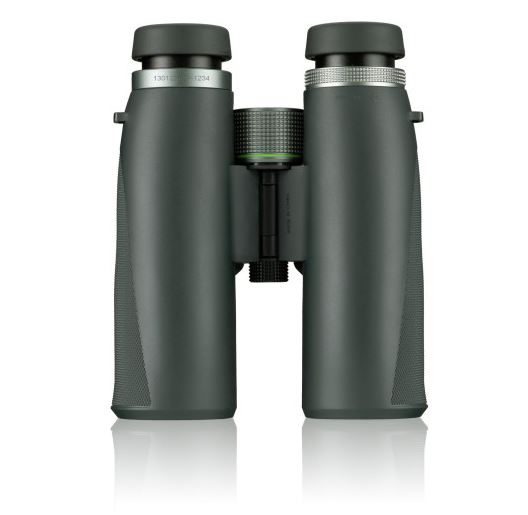Introduction
Binocular is one of the many inventions of science that greatly enhance human vision and allows us to view objects which are significantly farther from us or maybe unreachable in some circumstances, such as distant ships, enemy movements, birds, airplanes, theatre performances, and more. Binoculars make use of a pair of convex lenses and prisms to zoom objects and deliver crisp and clear images to our eyes.

How to focus binoculars?
How do binoculars work?
In each binocular barrel, the first lens catches light rays coming from the target object after reflecting from its surface and converges the rays into an inverted crisp image inside the barrel. This lens is known as the objective lens because of its proximity to the object that needs to be observed. The second lens, called the eye-piece lens, captures this image and magnifies it to a specific zoom level, like a magnifying glass, which our eyes then pick up and transform into visual information.
Each convex lens in a binocular has a certain focal length, that is, the location of its Focal point. The point where a lens converges the light that passes through it is called the Focal point. To understand this, take the example of a digital camera. A lot of modern DSLR cameras come with a modular lens feature and photography enthusiasts use a variety of lenses with their cameras to capture different types of pictures. Most photographers use a lens with a smaller focal length to get a crisp portrait picture of an object with a blurred background. For objects that are far away, lenses with a larger focal length are preferred, an example of this could be the handheld cameras at a cricket or football stadium or cameras used for astronomical photography. If the first lens with a small focal length is used to take a picture of a distant object, the entire image will be extremely blurry and similarly, if a lens with a larger focal length is used to take a quick portrait, the person’s figure may appear distorted in the pictures taken. Binoculars work in a similar fashion.
The sole purpose of binoculars is to allow the user to see objects up close and clear, and if a binocular does not deliver crystal clear images, it serves no purpose. Every time a binocular is shifted from watching a distant object to something that is comparatively nearer to the objective lenses or vice versa, the user needs to adjust its focus in a way that this new object lies within the combined focal length of its lenses. This can be achieved by changing the position of binocular lenses until the object appears sharp and clear.
What is the correct way to focus binoculars?
For adjusting the position of lenses, binoculars come fitted with two types of knobs:
- Diopter adjustment Knob
- Focusing knob
Diopter ring adjustments
The first one, the Diopter adjustment Knob, is used for compensating the differences between the eyesight of the two eyes by allowing the user to move the lenses relative to each other. People with the same eyesight for both eyes do not generally need to use this knob, but since not everyone is perfect, the Diopter mechanism comes in handy to customize your pair of binoculars to match your diopter needs easily. Once the binocular is suited to one’s eyesight, there is no need to adjust the diopter setting focus again unless there is a change in eyesight over the years or another person needs to use that binocular.
Focusing knob
The second knob is for the binocular focus mechanism which allows users to adjust the position of lenses simultaneously until the desired object appears sharp enough to view through the binocular. Modern binoculars come with two types of focus mechanisms:
- The Central Focus Mechanism and
- Individual Lens Focus Mechanism.
Most binoculars come fitted with central focusing systems while some precision binoculars make use of an individual lens focus mechanism. Both mechanisms are discussed below one by one.
Central Focusing Mechanism Binocular
Binoculars with the central focusing mechanism use a central knurled knob to simultaneously control the motion of lenses. Turning it clockwise or counter-clockwise synchronously increases or decreases the distance between the eye-piece and objective lenses in each barrel. While looking through the binocular, the user can turn the center focus wheel in either direction until the object appears sharp enough for observation. Some pros and cons of binoculars with a central focus mechanism are as under:

Benefits of Central Focus Mechanism
One central knob for adjusting the focus of a binocular makes it quite easier for both experts and people with little or no previous binocular experience to quickly adjust their devices for most objects. A novice can pick up a binocular and with a few turns of the focus knob, he or she will be able to view faraway projects with clarity in no time. This is one of the reasons binoculars with central focus systems are popular and widely used.
In optical devices such as binoculars and cameras, a close focus distance is the nearest point that a binocular can focus on. While for most binos this distance ranges from 0.5 to 30 meters, binoculars that have a central focus system are capable to be used on distances shorter than 1 meter. Since most binoculars are made to be used on distant objects, a shorter close focus distance means centrally focused binoculars can be used to observe objects like butterflies, ant colonies and if this distance is lower with respect to the magnification power, the user might be able to view micro-objects that are otherwise not visible to the naked eye.
The Central Focus system also promises sharper images with the help of simultaneous focus adjustment. Although our eyes capture images individually, the optic nerves take these images to the brain which then superimposes the two images over one another to give a final single image. Since most people have eyesight problems these days, such as myopia and hyperopia, sometimes one is more affected than the other. When images from both eyes are combined, they turn out to be blurred. Binocular works in a simple manner, and therefore, it is of utmost importance that both barrels of the binocular must have the same focal length. Since the focus knob controls the movement for both ocular barrels at the same time, there is little to no chance of equipment error between the focal length of one barrel and that of the other.
Demerits of Central Focused Binoculars
In central focuses binoculars, turning the central knob moves the lenses in both barrels simultaneously. To achieve this synchronized movement, the binoculars come with a central focus screw which is connected to a central knob and both barrels and works with the help of gear and screw mechanism to move the objective and eyepiece lenses nearer or farther from each other. The connection between the two barrels and the central focus screw makes it quite difficult for manufacturers to effectively waterproof these binoculars since a number of O-rings in congested places are required to effectively contain Nitrogen or Argon gas and seal the device from a splash of water or moisture. Recent central focused binocular models solve this problem but they are costlier and expensive to maintain should the gases find a way to leak.
Binoculars with central focus mechanisms require frequent focus adjustments, they are difficult to operate in low light conditions, since light is essential for correcting the focal length and if the surrounding is not bright not enough, there might be sufficient light to bounce back from the object into the binocular housing.
Focusing Mechanism Speed
Most binoculars come with a faster focus mechanism while others offer slow and precise focus control.
Fast Focus
Binoculars that can focus on objects quickly by turning the focus knob only slightly are called fast focus binoculars. This is usually achieved by smaller rotation travel of the focusing screw, requiring fewer turns of the focus knob to achieve a sharp and focused image. For an observer who is out in the woods for bird watching or a soldier who is closely observing the movement of enemy vehicles from a cliff, a few quick rotations of the focus knob to have a clear and sharp view can be of high significance since nobody wants to lose the bird they have been searching for or miss any action across enemy lines while adjusting the focus.
For more information about focusing suitable for birdwatching read the article below
Slow Focus
Some binoculars have a slower focus mechanism, which requires considerable rotation of the focus knob to achieve sharper images of objects. A large number of turns of the knob means the focus screw and the adjoining gears in the binocular barrels will have a relatively smaller pitch and one turn of the screw will move the lenses to a smaller distance only. While this may seem cumbersome, binoculars with slow focus actually promise precise control of focus and consequently ultra-sharp images.
A slow focus is mostly suitable for hunters who silently move through the forest in pursuit of their prey. Since most animals do not move quickly without a reason, hunters do not need to adjust their binoculars more often and consequently, a slow focus will suffice their goals. Hunters can also harness the fine-tuning capability of their optical aid to distinguish animals who are great at camouflaging from their surroundings.
Individual Lens Focus Mechanism
As the name suggests, this focusing mechanism is different from the central focus system that is seen in most binoculars, since each binocular barrel must be separately adjusted at a time using individual focus rings mounted on both barrels. This focus arrangement is not very common and is mostly favored by armed forces or professionals who require preciseness in their field of view.

Advantages of Individual Focus Mechanism
The good thing about binoculars with individual focus systems is that they need to be set only once. The observer needs to look through each eye one by one and rotate the focus ring simultaneously until the images through each barrel appear focused and sharp.
Once they are focused, the users of binoculars with individual focus mechanisms do not need to focus them again between intermediate and long ranges, since both eyes adjust to the combined focal length of the lenses and focus automatically from object to objects. This remains true until the nature of the target objects changes dramatically, such as going from hunting to stargazing at night. Additionally, having to adjust them only once makes it comparatively easy to use them in low light conditions, when there is not enough light to readjust their focus, unlike the central focus binoculars.
Another advantage of the individual focus mechanism in binoculars is improved waterproofing. Since each barrel is focused using a separate focus ring lying near the eye-piece lens, both barrels are virtually isolated from each other. This, and, the absence of a clogged screw mechanism makes it easier for optics manufacturers to waterproof the device. In addition, a fewer number of O-rings and rubber sealants are required to seal the barrels. Consequently, the development of individual focus binoculars is cheaper and they are inexpensive and easy to maintain in the long run.
Disadvantages of Individual Focus Mechanism
Binoculars with separate focus systems for individual eyes are notorious for their relatively larger close focus distance. This means that they are limited to observing objects that are distant only and might not be appropriate for magnifying objects that are comparatively nearer to the observer, such as the movement of ants or activities of caterpillars, etc.
These binoculars are also troublesome if more than one individual needs to use them, as is the case with most families. As eyesight differs from person to person and eye to eye, having the need to adjust the barrels separately for each user is definitely exhausting, since most users just want to point and observe. Also, during an adventurous trip, these binoculars cannot be shared for a quick glance at an interesting object since the time required to adjust the focus may arouse a lack of interest, thereby, ruining the purpose of having a binocular in the first place.
Keeping in mind the positives and drawbacks of a separate focus mechanism, these binoculars are generally deemed warranted by individuals who require precise focus control for observing steady objects, such as hunters, army, and reconnaissance personnel.
Difference between Central vs. Separate Focus Systems
Both binocular focus systems have their respective pros and cons and it is up to the user to decide which one suits them better.
Need more information about Central vs. Focusing Separated for Each Eye?
When we talk about adjusting the focus in binoculars, our mind immediately goes towards binoculars with a central knob to modify the combined focal length of all lenses. This is how mainstream central focus mechanism binoculars have become among enthusiasts as well as novices. The ease of use, smaller close focus, and sharper images make these binos suitable for a variety of hobbies, including bird-watching and plane spotting. They are also multiple-user-friendly due to their ease of focus and use.
Binos with individual focus systems for each barrel are appropriate for a single user who is unlikely going to share his device. Since they work better in low light conditions, hunters, marine navigators, and armed personnel prefer them over other versions of focus mechanisms, because of their precise lens motion control.
Conclusion
We live in an ever-changing world and keeping up with modern technology is the key to making the change around us. Binoculars have been an amazing invention for adventurists, hobbyists, travelers, hunters, and zoologists for years but the thing that has been missing all these years is the ability to adjust the focus of the binoculars to get crisp and sharp images. People in the past continued to use their devices with a fixed focus to observe a range of objects. Sometimes they were successful but for other objects with varying distances from the observer, fixed-focus binoculars provided dull and blurry images, there was no way around until manufacturers came up with the idea of incorporating adjustable lenses. This feature revolutionized the industry and almost every optics manufacturer produces binoculars with not just one, but two types of binocular focus mechanisms. Therefore, binoculars with a fixed focus or no-focus have become obsolete because of their inferiority in front of focus-controlled binoculars.
It’s up to the end-user to decide which mechanism will suit their needs better, one with central focus or with individual focus. After deciding on one, it is a great idea to learn about their basic operation and focus adjustment procedure. Most owners do not know how to correctly focus their devices (or set the correct diopter compensation), and without knowing how to focus them, even the finest pair of binoculars in the market will have no apparent advantage over cheap ones or those without adjustable focus, so act accordingly.




